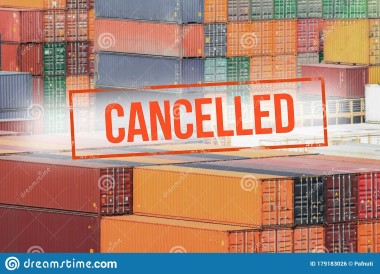Reasons A Customer Would Cancel An Import Container.

In today’s business environment there are many reasons a customer may back out of a shipment. Freight prices have increased at a record pace to all-time highs, shipment delays are approaching unprecedented levels and supply chains are severely disrupted. All these reasons lead to an increase in canceled orders and backup in inventory leaving retailers with partially empty shelves. Importers and suppliers are put in a position where they must sell excess inventory to liquidation buyers or liquidate merchandise buy reducing the price in an effort to get rid of the extra stock.
1. Late Shipments. Many shipments today are so late that the customer cannot take delivery so they will cancel the order. Timely shipments are especially important to retailers who were counting on seasonal goods to arrive in time. If they accept these late shipments, they would have to hold the goods for another year at which point they essentially have to sell old inventory. Late Valentines, Easter, Halloween or Christmas shipments have to either be canceled or held until the following year. Liquidation buyers that specialize in buying closeouts often buy closeout deals from importers and distributors because of late shipments and canceled orders. It is one reason wholesalers may have to liquidate merchandise and sell old inventory.
2. Price Increases. Price increases are another reason for canceled orders. Retailers selling closeouts and overstock deals often have set prices for their merchandise. Customers are only willing to pay a certain amount of money for things, and if the store knows they won’t be able to get it, they cancel. Again, this leave the supplier in a position where they have to sell excess inventory and liquidate merchandise. If the wholesaler chooses to keep all the inventory in their warehouse, they may still be in the same situation years later where they have to sell old inventory at steep discounts to liquidation buyers.
3. Shipping Costs. The cost of overseas shipping containers has increases 5-fold in the past year. What used to cost $3,500 from China to Chicago is now $17,000. Containers that used to be $2,500 to California are not $12,000. These costs can be impossible for suppliers to absorb 100% so customers are canceling orders. Some retailers are negotiating with their wholesale suppliers while others are not. Any canceled orders result in the vendor having to sell excess inventory vs getting stuck with an entire shipment. If they choose to keep the shipment and store it in their warehouse, they will be forced to sell it at the same high prices to another customer. If they are unable to get rid of the inventory, they may sit with the product for years before they finally mark down the price and sell old inventory.
It is important to understand the chain of events that are currently being put in place. As the cost of goods and shipping goes up, suppliers are forced to charge their customers more money. If customers are not willing to pay more they will not get new inventory in their stores. At the end of the day prices will increase which may or may not lead to inflation. Hopefully, the market will absorb these new costs and the end user will grow to understand the cost of goods has increased. If not, there will be a lot of closeout and excess inventory that will be unsold and sitting in warehouses.



